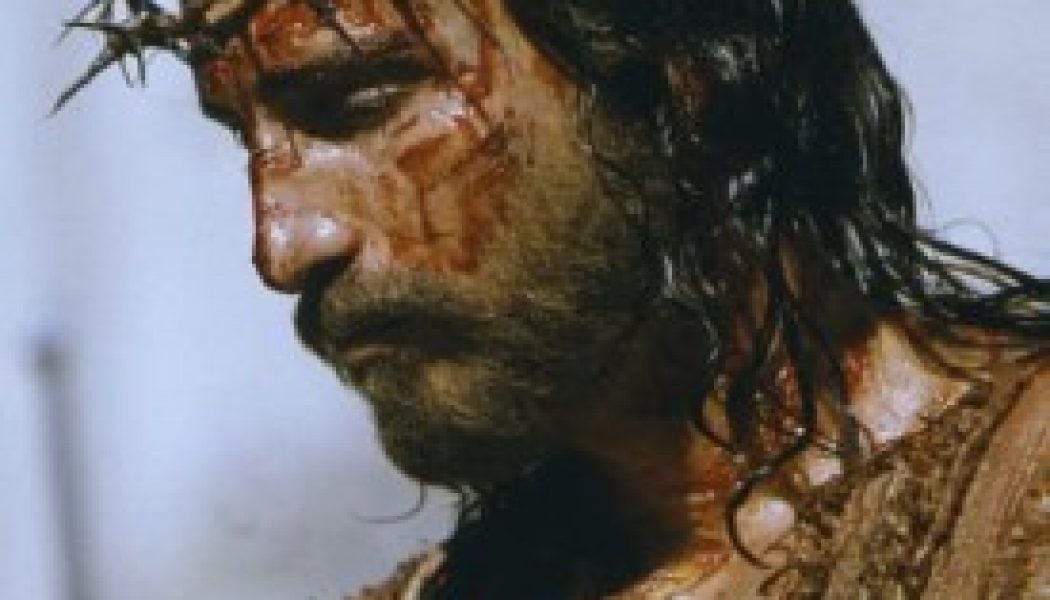It is inadequate to describe Mel Gibson’s masterpiece, “The Passion of the Christ,” as a film; it is much more than that. It would be more accurate to describe it as a moving icon. It calls us to prayer and leads us to the contemplation that takes us into the presence of Christ Himself.
 It’s been seventeen years since the premiere of Mel Gibson’s Passion of the Christ, and it’s been almost as long since I’d last seen it. There was a period of several years after its release that my wife and I had made a point of watching it during Holy Week. This came to an end after our daughter became old enough to be affected by what she saw on the screen, the gruesome violence of Mr. Gibson’s presentation of the Passion being unsuitable for young eyes. For years, therefore, our copy of the DVD gathered dust amongst the many neglected disks in a cabinet in the playroom. This year, our daughter having recently turned thirteen, we took it out, dusted it down, and watched it together as a family.
It’s been seventeen years since the premiere of Mel Gibson’s Passion of the Christ, and it’s been almost as long since I’d last seen it. There was a period of several years after its release that my wife and I had made a point of watching it during Holy Week. This came to an end after our daughter became old enough to be affected by what she saw on the screen, the gruesome violence of Mr. Gibson’s presentation of the Passion being unsuitable for young eyes. For years, therefore, our copy of the DVD gathered dust amongst the many neglected disks in a cabinet in the playroom. This year, our daughter having recently turned thirteen, we took it out, dusted it down, and watched it together as a family.
I was stunned afresh at how good it is. It is so good, in fact, that it is inadequate to see it as being merely a film. It is so much more. It transcends the genre, defying its limitations. It does so, paradoxically, by breaking all the rules. The dialogue, of which there is very little, is sparing, succinct, and to the point. There is no extraneous verbiage. No word is uttered that is not absolutely necessary, and each word is delivered with pinpoint potency. And, what is more, the sparing dialogue is either in Aramaic or Latin, requiring the use of subtitles. This daring decision to let the story speak in archaic “dead” languages is truly inspired, adding a paradoxical depth and power, the numinous serving to ennoble the luminous, much as Latin ennobles and illuminates the liturgy. Having Christ speak in Hollywood English would have vulgarized and trivialized His words, much as the vernacular vulgarizes and trivializes the words of consecration at the Mass. Furthermore, the subtitles add a subtlety to the viewer’s experience of the work, requiring a visual involvement with the words and not merely an aural engagement. With the ear being even more prone to wander than the eye, this dual engagement of the senses deepens the viewer’s immersion in the action, the reading eye serving to support the listening ear.
The plot, if the re-presentation of Christ’s Passion can be reduced to such analysis, follows the Gospel narrative, aided and abetted by tradition, especially the tradition that has been solidified in the popular and pious devotional practice of the Sorrowful Mysteries of the Rosary and the Stations of the Cross. We have the Agony in the Garden, Judas’s betrayal, the scourging, the crowning with thorns, the taking up of the cross, the falling three times under the weight of the Cross, Simon of Cyrene, the wailing of the women of Jerusalem, the meeting with St. Veronica and the miracle of the veil, the meeting of Christ with His Mother on the via dolorosa, and, of course, the gruesome drama of Golgotha itself.
There is no light relief in the midst of the ugliness of sin and the beauty of Christ’s response to it, but there is a degree of dramatic respite from the painful intensity of the Passion in the flashbacks to the life of Christ: home life with His Mother prior to His public ministry; His teaching and preaching; and last, but indubitably not least, the Last Supper, which is depicted as the typological prefigurement of both the Crucifixion and the sacrifice of the Mass.
As for the casting, it is flawless. Jim Caviezel’s performance as Jesus is so inspired that it overshadows in its simplicity and brilliance all other film presentations of Christ. The Mother of God has a timeless and ageless beauty; Mary Magdalen has a sensual beauty suggestive of her sinful past but transfigured by her love for the Lord and her penitential spirit. John the Evangelist is a powerful presence in the silence of his love for both Christ and the Mother of Christ. In contrast, the grotesque physical ugliness of many of the characters is a device for exposing their grotesque spiritual ugliness. The demonic presence is androgynously creepy in the character of Satan himself but also in Herod and the satanically self-absorbed narcissism and decadence of his court.
As befits a work of such profound orthodoxy, and Mel Gibson’s Passion of the Christ is indubitably such a work, the darkness does not prevail. The shadow of the Fall which falls upon Golgotha is not shown as the final victory of darkness over light but as the prelude for the final victory of the Light over darkness. The catastrophe of the Crucifixion is followed in Mr. Gibson’s Passion of the Christ, as it is followed in the actual Passion of the Christ, by the eucatastrophe of the Resurrection, the sudden joyous turn in the story of man which God Himself executes.
I began these musings by stating that it was inadequate to describe Mel Gibson’s masterpiece as a film, insisting that it was much more than that. It would be more accurate to describe it as a moving icon. It calls us to prayer. It leads us to the contemplation that takes us into the presence of Christ Himself. It is a gift beyond words, exposing the inadequacy of my fumbled scribbling. As T.S. Eliot said of Dante’s Divine Comedy, there is nothing to do in the presence of such ineffable beauty except to point and be silent. Enough has been said because not enough could possibly be said. There are no words equal to the task. The rest is silence. Silence and praise. The silent praise of the presence beyond the silence.
The Imaginative Conservative applies the principle of appreciation to the discussion of culture and politics—we approach dialogue with magnanimity rather than with mere civility. Will you help us remain a refreshing oasis in the increasingly contentious arena of modern discourse? Please consider donating now.
The featured image is an image of Jim Caviezel as Jesus in The Passion of the Christ (2004), courtesy of IMDb.
.pf-button.pf-button-excerpt { display: none; }
Join Our Telegram Group : Salvation & Prosperity









